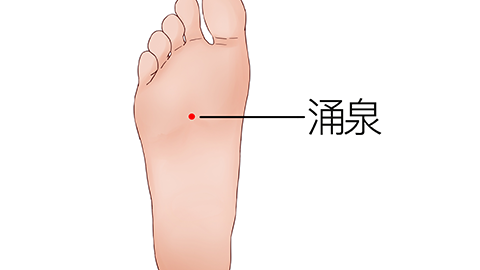Where is the Yongquan acupoint located?
Generally speaking, the Yongquan point (KI1) is located on the sole of the foot and is also known as the "Di Chong" or "Foot Sole" point. It is the Jing-Well point of the Kidney Meridian of Foot Shaoyin. The detailed analysis is as follows:

When the foot is flexed, the Yongquan point is situated in the depression of the anterior portion of the sole. Specifically, it lies at the junction of the anterior one-third and posterior two-thirds of the line connecting the web margin between the second and third toes to the heel. It can also be understood as the depression in the anterior one-third of the sole, excluding the toes. To locate this acupoint, the patient can lie supine and find the intersection point one-third along the line from the web margin between the second and third toes toward the heel, or flex the toes and observe the depression formed on the sole, which indicates the Yongquan point. In traditional Chinese medicine, the Yongquan point is known for its functions of nourishing yin to reduce fire, reviving consciousness, and treating unconsciousness. It is primarily used to treat hypertension, neurogenic headache, dysuria, urinary retention, constipation, epigastric pain, and other related conditions.
When massaging the Yongquan point, use the fleshy part of the thumb, index finger, or middle finger to apply moderate pressure. The pressure should be sufficient to produce a feeling of soreness and distension but not too forceful to cause injury to the soft tissues of the sole, which could lead to pain or swelling.






